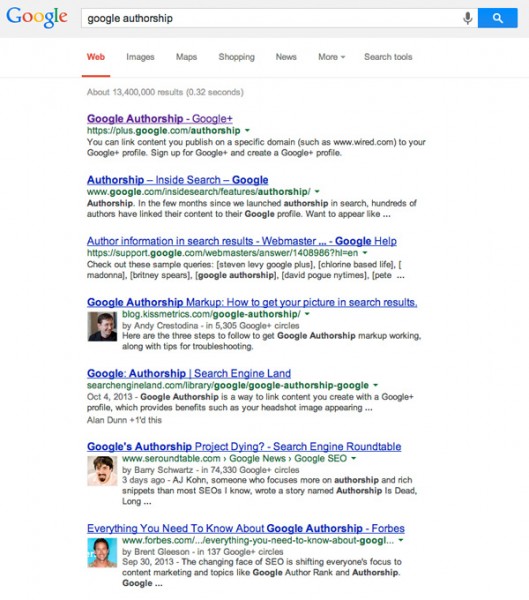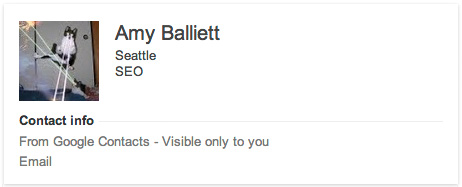Over the past few years, the needs and expectations of consumers have changed. We live in a world inundated with information and, while we used to stroll the web eagerly seeking lengthy articles to consume, we now seek out and share memes, photos, animated gifs, infographics and videos more than ever. In fact, Pinterest is one of the most trafficked content sites online ranking higher than any news site! In addition to this, Pinterest drives more traffic to business sites than Google+, YouTube and LinkedIn combined! As more and more brands realize that their customers love to look rather than to read, answering the question of how to optimize for a visual web will be a pivotal need for companies wishing to remain competitive. Here's 3 tips to plan your SEO campaign for this changing tide.
1. Recognize and Embrace Google's Agenda
Google has always had 1 goal: to provide the ultimate search experience for consumers. Google's job is not to cater to SEO's or to reward the SEO for writing keyword rich content. Instead, all they care about is quality content and today, powerful visuals seem to be the epitome of quality. Take a typical search in Google as an example:

A simple search for "coffee" yields a results page teaming with pictures. Normal, text-based search results can't compete with the eye candy of a perfectly poured cup of coffee taking over the upper fold. But what is a website to do that has focused on writing great text to rank this whole time? Embrace the visual web. A good SEO adapts with changing landscapes, and there's no better landscape than Google's search results to show SEO's how they have to change. Text should no longer be the backbone of a website and should instead seek to complement visuals. Here's some way SEOs can embrace this new standard:
- Create a visually focused website with icons to showcase services, photos to show off a team or company location, and hero images to connect with the consumer
- Add a blog to your clients' websites with large image thumbnails for each article. Place links to the top handful of articles on the homepage of your client sites, with those thumbnails next to the links. Also, don't skimp on thumbnail size: 200px should be a minimum width
- Alt and Title tags have always been a tossup for SEOs, but they are low hanging fruit you shouldn't forget about as crawlers will still read them and they provide a service for blind or differently abled site viewers that shouldn't be ignored.
2. Move Beyond the Selfie, but Stay Social
Social media is no longer all about coming up with something catchy in 140 characters or less. Now it's about Instagram, Vine, and Pinterest. For many searches, Google places image results above most organic listings with the most popular and accurate to a search displaying first. There's no better way to optimize your images than to get them shared in social media and when it comes to image sharing, Pinterest should be your top priority.

In addition to posting your images, they should become a part of your social media strategy as a whole. A company's social media presence helps to establish them as a trustworthy brand and that social trust goes a long way for search results. Here's some ways to include images in any SEO/SMO strategy:
- Tell clients to start taking photos showcasing company culture. Posting those photos to their Facebook fan page will help personify their brand and gain followers. In fact, Facebook images receive more likes, comments and shares than any other form of communication on the social network.
- Create a Vine & Instagram campaign. Today, there are 8 Vines released each second on Twitter. That's, oddly, not a lot of competition so jump on the bandwagon early and gain followers through posting information rich content in 7 seconds or less! Instagram feeds into Google+ and Facebook with ease and only takes 16 seconds to produce a "quality" video.
- The Internet loves infographics! Infographics give you an opportunity to take advantage of the visual web while sharing an important message. But be careful. Thousands of infographics are released each day so you must create a quality design with quality content.
3. Optimize Your Google Authorship Image
If you're not on the Google Authorship bandwagon yet, you should be. Why? Because Google will place your author pic right next to your search results. Here's an example:

Of all the search results, which would you rather click on? The one with just text, or the one with a trustworthy face? And speaking of trustworthy faces, choose your authorship image wisely. I, for instance, have an image of cats shooting laser beams out of their eyes:

Is it funny? Welll... in my opinion. Is it something people will click on? Likely not. As such, I need to take my own advice as an image that shows you're an expert in your field will positively impact click thru rates.
In Conclusion
The visual web is an inevitable evolution of our own communication. Sites like Buzzfeed, Pinterest, Instagram, and more will continue to grow in popularity because they have so much visual appeal and even Google is hopping on the image-centric bandwagon. As SEOs, we have to evolve. It's no longer about writing keyword rich content. Instead we must focus on creating quality content that complements quality visuals. Organic traffic can no longer be all about the search engine (which we've been moving away from for years). It has to be about using visuals to drive people to a website and to then keep people on that site. Great visuals can decrease bounce rates and increase time on site while also encouraging a growth in direct traffic, which is always more qualified anyway.
